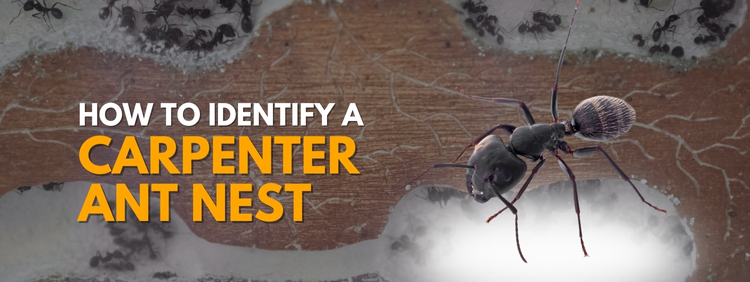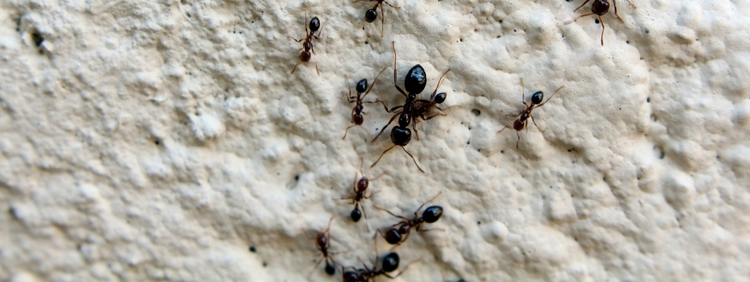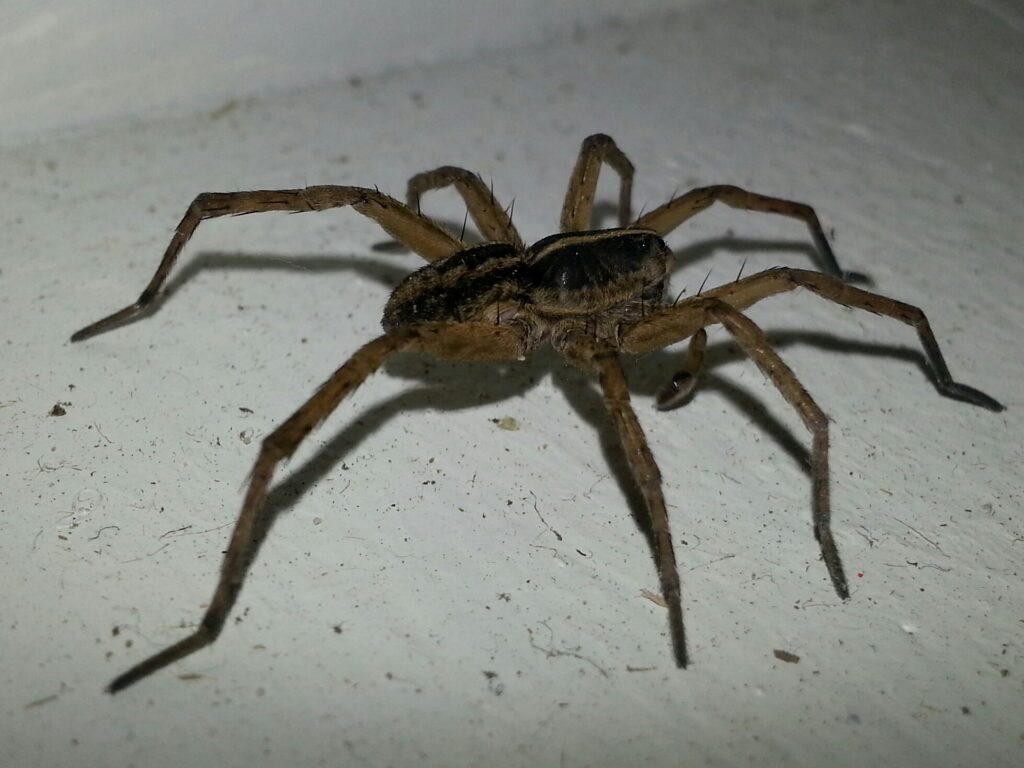 Ever awaken to find tiny wood shavings on your floor, or perhaps noticed a constant line of busy trailblazers who seem out of place with the other inhabitants of your home in Burlington? Beware; these signs might not be as innocent as they seem. They could be the work of carpenter ants, silent invaders, making a haven within the confines of your home.
Knowledge is the best antidote to these home intruders. So, we'd like to light on the cryptic dwelling of these pests, giving you an illustrative description of what a carpenter ant nest looks like. Understanding their nesting habits is the first step to rooting them out and putting a stop to their destructive march.
Half the battle is knowing your enemy; the other half is using your knowledge wisely to strike at their weak points.
Moreover, this article will help you understand why do-it-yourself pest removal techniques should not be your go-to solution and how to steer clear of a burgeoning infestation. Most importantly, we'll underscore the advantages of professional intervention and touch upon one name that resonates deeply with Burlington residents when it comes to pest control: ours.
You can clear the decks and prepare yourself for an insightful journey into the world of carpenter ants and their nesting habits.
Ever awaken to find tiny wood shavings on your floor, or perhaps noticed a constant line of busy trailblazers who seem out of place with the other inhabitants of your home in Burlington? Beware; these signs might not be as innocent as they seem. They could be the work of carpenter ants, silent invaders, making a haven within the confines of your home.
Knowledge is the best antidote to these home intruders. So, we'd like to light on the cryptic dwelling of these pests, giving you an illustrative description of what a carpenter ant nest looks like. Understanding their nesting habits is the first step to rooting them out and putting a stop to their destructive march.
Half the battle is knowing your enemy; the other half is using your knowledge wisely to strike at their weak points.
Moreover, this article will help you understand why do-it-yourself pest removal techniques should not be your go-to solution and how to steer clear of a burgeoning infestation. Most importantly, we'll underscore the advantages of professional intervention and touch upon one name that resonates deeply with Burlington residents when it comes to pest control: ours.
You can clear the decks and prepare yourself for an insightful journey into the world of carpenter ants and their nesting habits.
What are the Distinguishing Features of a Carpenter Ant Nest?
One of the helpful methods to spot the presence of these troublesome invaders is by having a clear understanding of the distinctive features of a carpenter ant nest (also referred to as colonies). What does a carpenter ant nest look like? Below, we'll walk you through some of these key features:- Material Preference: Carpenter ants, contrary to popular belief, do not eat wood like termites. Instead, they excavate wood to create their nests. They prefer damp and damaged wood, making bathrooms, kitchens, and laundry rooms high-risk zones.
- Frass: As carpenter ants carve their way through timber to establish their colonies, they leave behind a sawdust-like material known as frass. Locating piles of such frass can often hint towards the presence of an ant burrow nearby.
- Nest Size: Carpenter ant colonies range in size. Primary colonies often contain thousands of workers and one queen, while satellite colonies, which contain workers, larvae and pupae, tend to be smaller.
- Multiple Colonies: A significant attribute of a carpenter ant invasion is the presence of multiple colonies, both primary and satellite nests can be located both inside and outside your home.
What are the Clear Signs of a Carpenter Ant Infestation in Your Home?
Recognizing the signs of a carpenter ant infestation is key to swift and effective action to protect your beloved residences. The earlier you identify these distinctive clues, the sooner a solution can be applied. Below are a few signs to keep a close eye on:- Stray Ants: Spotting a lone carpenter ant in your home can indicate a nest nearby. However, it's imperative to note that not all individual ants signify a burgeoning infestation; some might merely be scouts doing exploratory missions away from their main colony.
- Noise in the Walls: These industrious creatures can often be heard at night when they're most active if you listen carefully. The sounds of their hard work can echo through the walls of your home. This symptom indicates a potentially mature colony that has found its home within your dwelling.
- Ant Trails: Seeing ants in a trail or queue, especially near food sources or water outlets, is a sign of possible infestation. This phenomenon often indicates that these ants are relaying food back to their nest, proving the existence of a larger carpenter ant population in your home.
- Damage to Wood Structures: Any unfamiliar and unexplained damages to wooden objects or structures can suggest the presence of carpenter ants. Often, the carpenter ants hollow out sections of the wood, causing the structures to weaken, which may eventually lead to a risk of collapse if left untreated.
Why are DIY Methods for Controlling Carpenter Ants Often Unsuccessful?
In today's era of online DIY tutorials, it may seem tempting to tackle the issue of an ant problem in your home by yourself. However, when it comes to staving off these intimidating intruders, DIY methods remarkably fall short. Let's dive deep into exactly why this is so:- Lack of Knowledge: Successful eradication requires a precise understanding of the species and its behaviour. Misidentifying the culprits or being unaware of the life cycle, habits, and habitats of these unwelcome visitors leads to ineffective treatment.
- Inappropriate Equipment: Homeowners generally lack the specialized tools and chemicals required to effectively treat the infestation. While you might find some treatments in your local store, they might not be as powerful or suitable for your exact issue.
- Safety Hazards: Many of the chemicals used to combat these annoying pests can be harmful if misused. Without proper training, the use of these substances may pose a risk to your health, as well as the environment.
- Incomplete Treatment: As a layman, you might not find all the nests, leading to a resurgence. A comprehensive solution would include identifying all the nests, treating them, and ensuring preventive measures.
- Repeated Infestations: Without addressing the source of the problem, you may find yourself faced with repeated infestations. This cycle can become a tedious and expensive process without professional intervention.

What are the Steps a Professional Pest Expert Would Take to Control and Prevent a Carpenter Ant Infestation?
Understanding the steps towards exterminating unwelcome guests like carpenter ants from your abode is the first crucial stride towards a pest-free home. A certified pest technician will undertake various protocols while ensuring minimal disruption to your daily routines. Let's explore this in detail:- Inspection: Initially, a thorough audit of your premises is conducted to locate nests and potential nesting areas of the interloping insects.
- Identification: Following the investigation, the operator identifies the troublesome species. This step is crucial as different types demand different solutions.
- Bespoke Plan: Based on your property's specifics and the extent of the ant issue, a customized action plan is created.
- Execution: Herein, the bug eradication procedure commences. This could involve highly effective techniques such as baiting or application of non-repellent insecticides, ensuring complete removal of the vermin.
- Follow-up: Regular visits are made to ascertain the effectiveness of the implemented strategies and make necessary adjustments if required.
- Preventive Measures: The expert will provide essential tips to deter further invasions, which may include sealing potential entry points, maintaining tidiness, and regulating moisture-prone areas.
What are the Benefits of Hiring a Pest Control Expert for Carpenter Ant Control and Prevention?
Enlisting the help of a seasoned pest management specialist brings a myriad of advantages when dealing with an incursion of these wood-munching insects. Here is why expert intervention is pivotal for effective carpenter ant mitigation and prevention:- Extensive Knowledge: A tried-and-true pest specialist has a comprehensive understanding of carpenter ant habits, life cycle, and preferred habitats. This knowledge is crucial in locating and annihilating colonies, thus significantly reducing the recurrence of these harmful insects.
- Efficacious Solutions: Pest experts employ potent, specialized treatments tailored for carpenter ant eradication. Unlike over-the-counter sprays and bait traps, these professional solutions offer a high success rate.
- Safety: Handling chemicals can pose risks to non-professionals. Experts in pest management comprehend the proper handling and application of such substances, guaranteeing the safety of all household members and the environment.
- Preventive Measures: Professionals provide guidelines and preventive measures to keep these unwelcome guests from re-establishing their habitat in your home. They can identify potential vulnerabilities in your house that might attract these insects.

